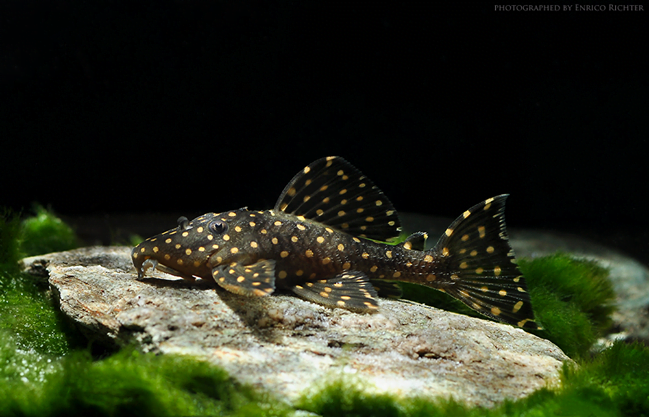
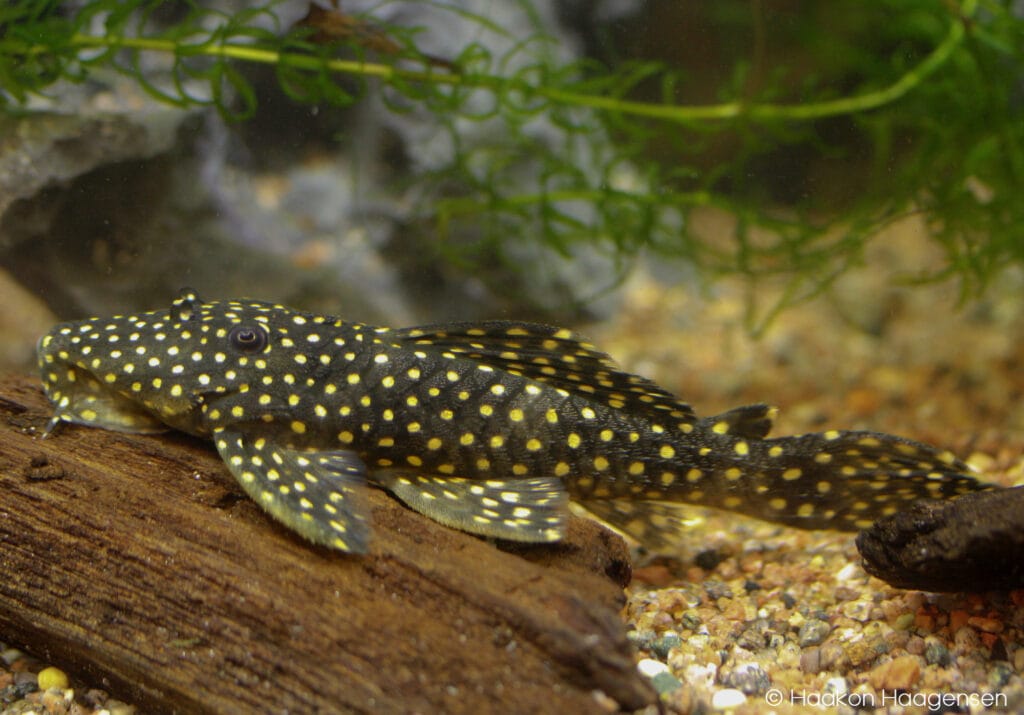
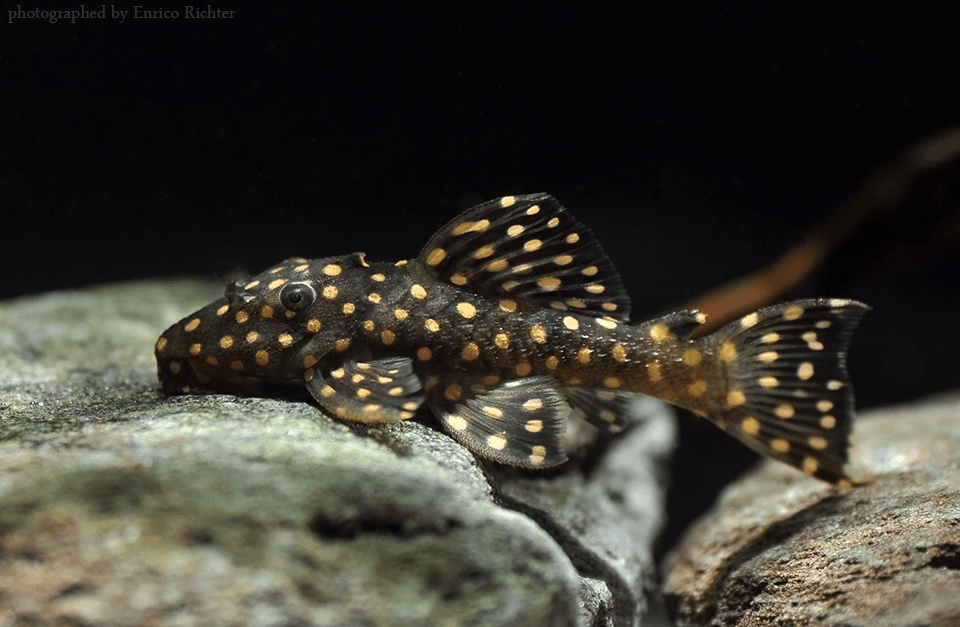
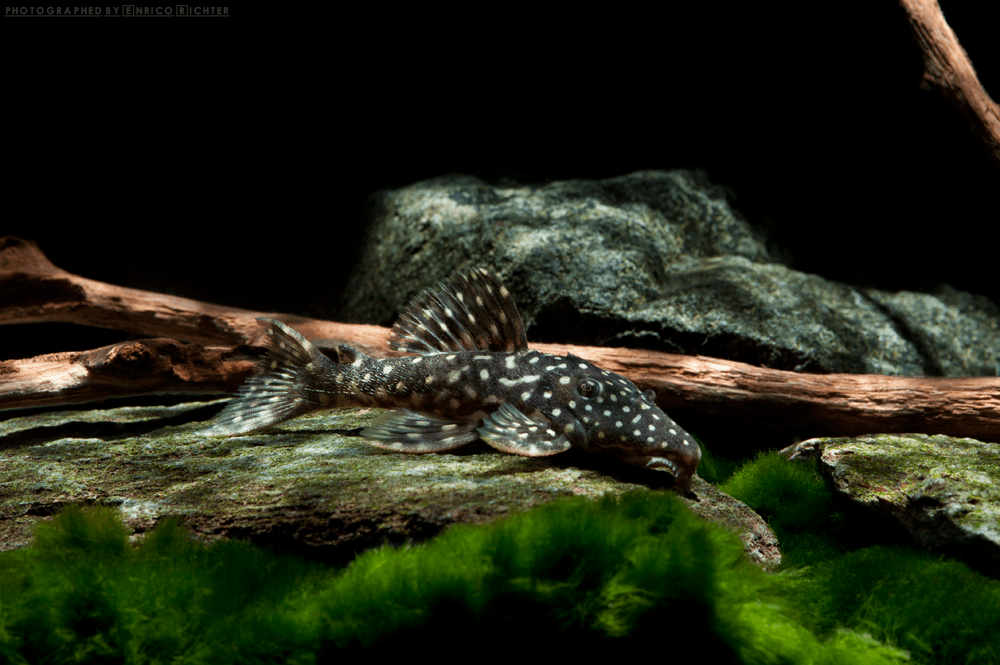
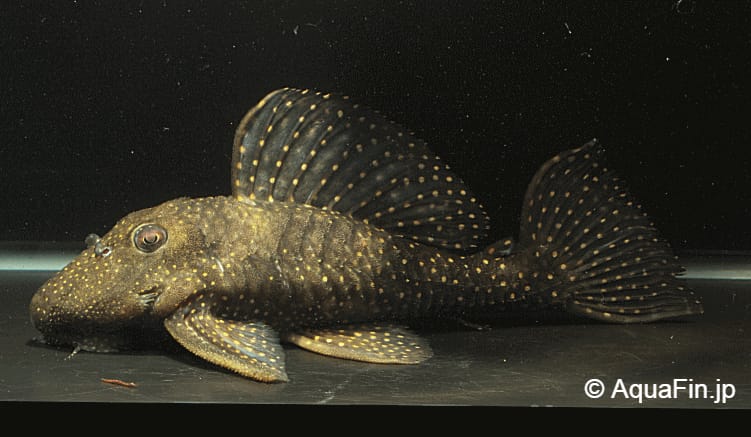
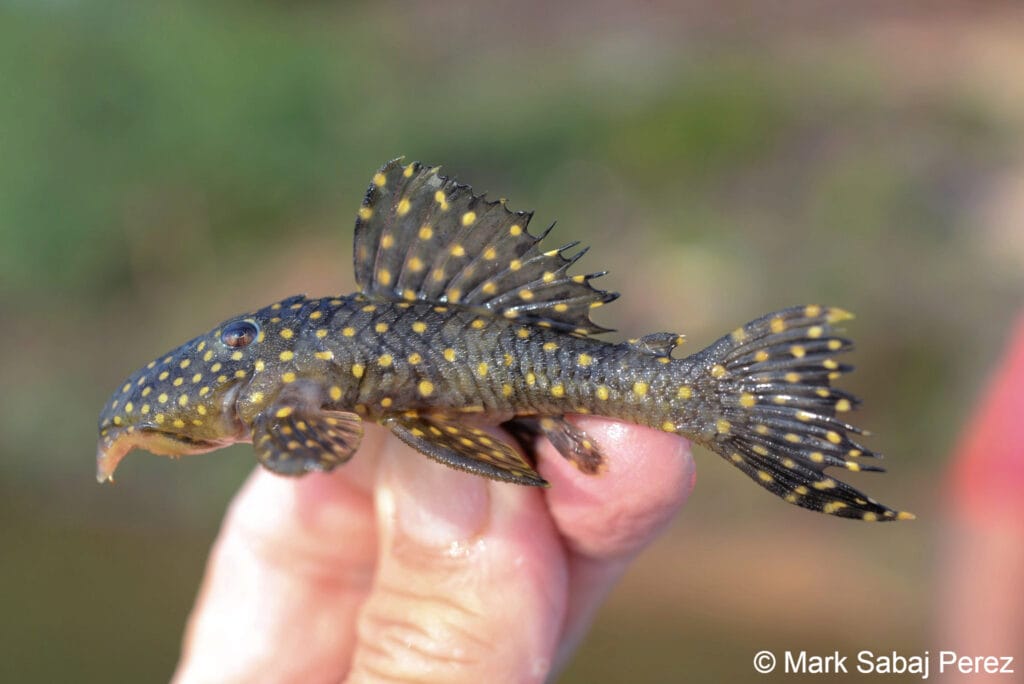
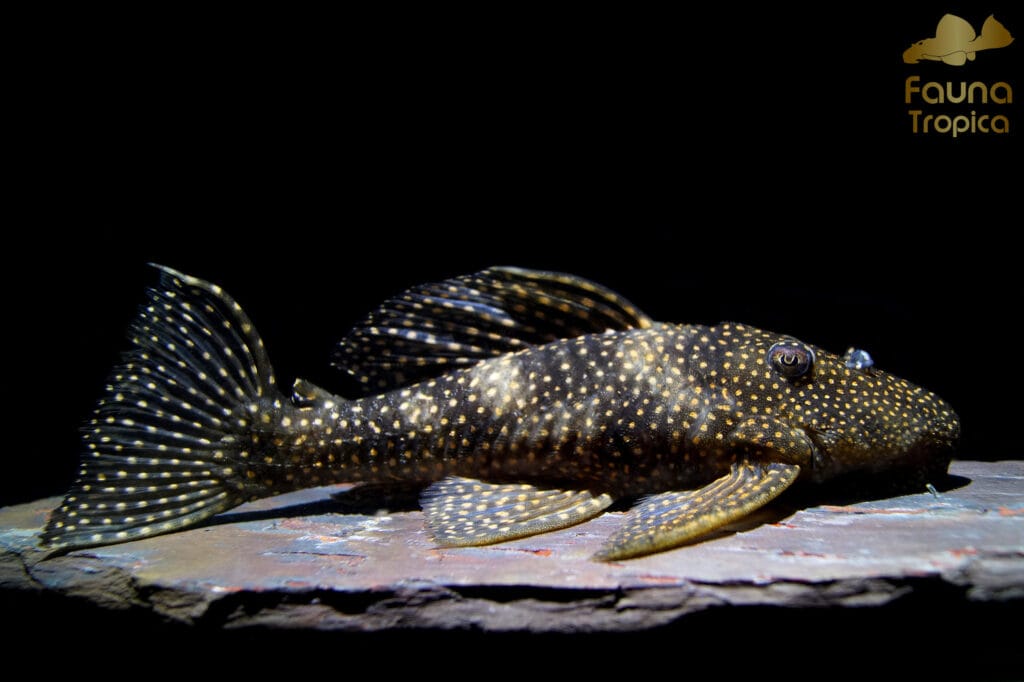
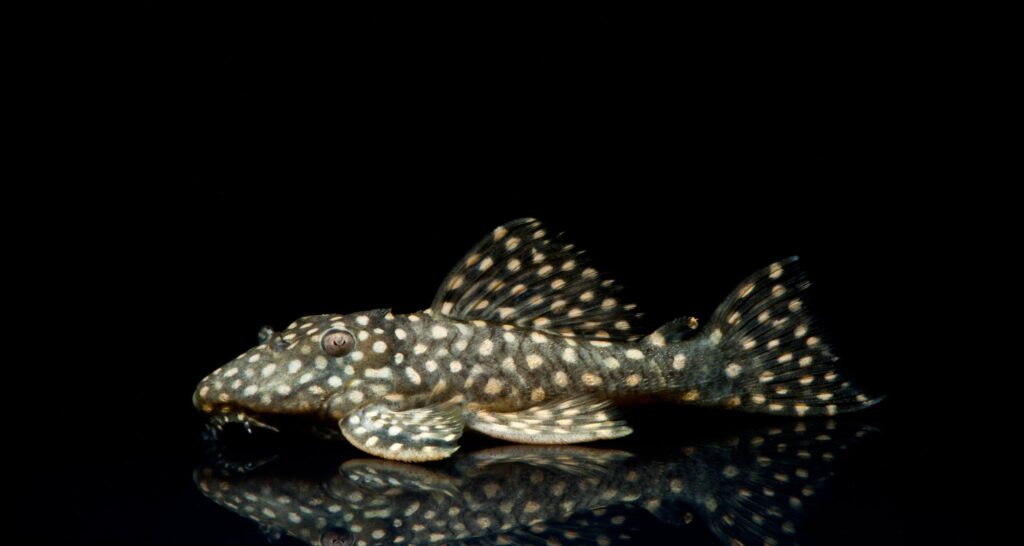
L.galaxias originates from Rio Tocantins, Brazil, and is a regular encounter in the trade. It’s a rather large fish that needs some space to thrive, but if sufficient foods and proper water conditions are offered, they are hardy and easy to keep and even breed. The form we call L7 is probably a geographical variant of L.galaxias, but we must wait for a scientific publication to get this verified.
Facts:
Name: Leporacanthicus galaxias (Isbrücker & Nijssen, 1989)
Trade names: Galaxy Pleco, Vampire Pleco, L7, L29
Origin: Rio Tocantins, Rio Guamá, Brazil
Maximum size: 30 cm / 12”
The true L.galaxias (L29) can be distinguished from the very similar form L7 from nearby river Rio Guamá by its shape; L7 has a shorter head, a slightly higher body and a higher dorsal fin. Also, the spots of L7 are said to be more yellowish. The distribution of L.galaxias may prove to be far wider than just the Rio Tocantins system, as very similar fish can be found in Rio Nhamundá (no L-number) and Rio Aripuaná (L294).
These fish must be given large, well filtered and clean aquariums with lots of hiding places. They are peaceful towards most other fish, but the males can be territorial and aggressive towards each other. Leopracanthicus are meat eaters and should be fed a protein rich diet consisting of crustaceans, shrimps, mussels and fish meat. Good quality dried foods should also be offered. They are mature and ready to breed at a surprisingly young age/small size, even specimens under 10 cm have spawned in captivity! Larger specimens can produce big clutches of 200 or so eggs.
More info:
